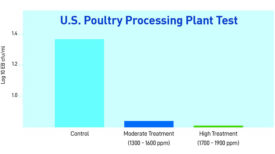Meat and Poultry Processing
Processing Tech
Processors that leverage advanced freezing and chilling systems are in position to boost the appeal of meat and poultry, but costs remain a concern.
Read More
Tech | Supplier's Perspective
Electrostatic technology advances as antimicrobial intervention
Read MoreTech | Processing
Adding clean, even flavor
New technologies are improving marinades and injections.
Read More
Tech | Food Safety
Designed Right: Automation and easy-to-clean equipment
Key components to sanitary design
Read More
Stay ahead of the curve. Unlock a dose of cutting-edge insights.
Receive our premium content directly to your inbox.
SIGN-UP TODAYCopyright ©2024. All Rights Reserved BNP Media.
Design, CMS, Hosting & Web Development :: ePublishing












